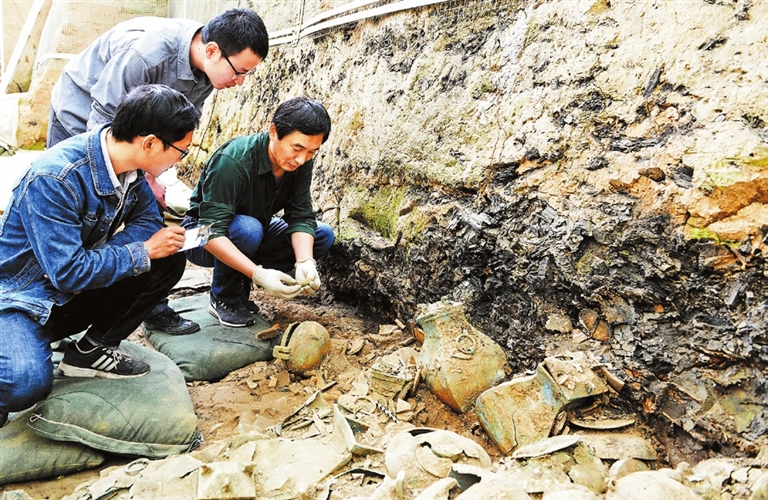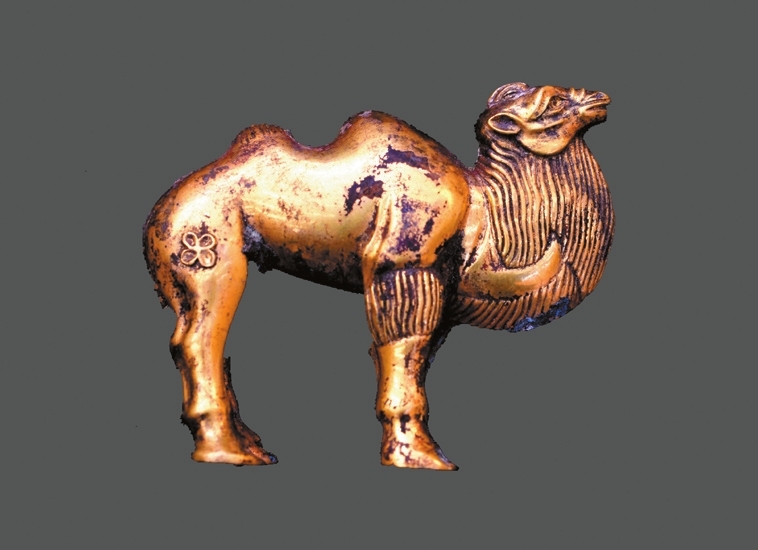

MORE than 20 ancient tombs were excavated to the west of Emperor Qinshihuang’s Mausoleum in Shaanxi Province, archeologists working at the site announced Monday. A large number of pottery, bronze ware, jade ware, and some gold and silver ware were found in the tombs, among which a gold camel statuette is the earliest of its kind so far unearthed in China. The tombs, one of which is only 100 meters away from the outer part of Emperor Qinshihuang’s Mausoleum, were arranged in a line. Archeologists infer that the original owner of the tombs could be a close relative of the Qin emperor and may have been buried as a sacrifice to the emperor. As camels were not native to China, the uncovered gold statuette could be evidence that commerce and exchanges with ethnic minorities in now-West China started even earlier than the Han Dynasty (206 B.C.-220 A.D.), when the ancient Silk Road began to connect the East with the West. Meanwhile, the archeologists have announced that based on the discovery during their latest excavation of Emperor Qinshihuang’s Mausoleum, they have named a new category of terracotta warriors that represents the lowest rank in the army. The excavations over the past 10 years unearthed more than 220 terracotta warriors, 12 terracotta horses, two carriages and lots of arms, including bronze swords, shields and crossbows. Some 30 km east of Xi’an City, Emperor Qinshihuang’s Mausoleum was discovered by chance in 1974, when a local farmer attempted to drill a well but came upon the terracotta warriors. (Li Dan) | 
